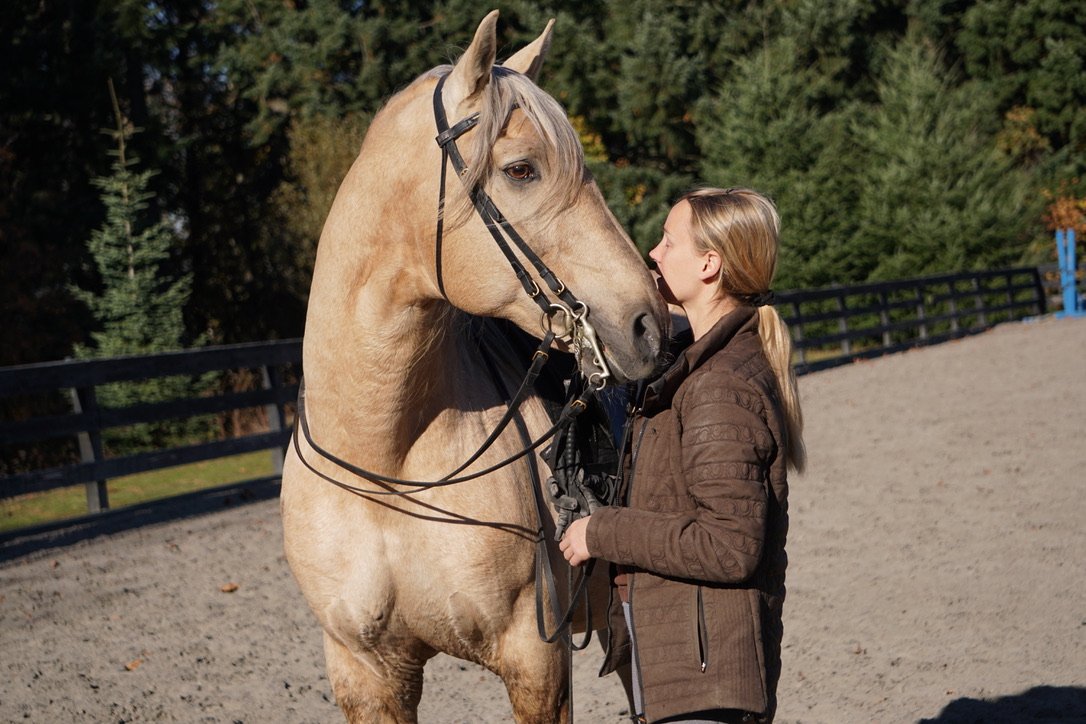Make a Contract with Your Horse
Make a contract with your horse.
Every year, I meet hundreds of kind, good people, who sincerely want to be kind and good with their horse. However, I have yet to meet one who could recite the principles of their horsemanship. Even those who have been riding for decades, who deeply care about their horses, operate without conscious guidelines of how they train. We must do better. Because to me, being clear on the principles we hold is the single most important missing piece for better caring for our horses and the future of this precious art.
A principle is a fundamental truth or proposition that serves as the foundation for a system of belief or behavior. It is a truth that is so fundamental that it carries through with every horse in all situations, at all times. Even and especially the difficult times. If it does not hold true in every circumstance, then it is either not a good principle, or it is not a principle at all. They can state broad philosophical values, or specific technical precepts. Some examples could be:
1 Education is done by way of explaining to the pupil's mind, and not by fear, coercion or pain
2 The aids are a taught language
3 The aids are to request, or restore, never maintain
4 Aids must not contradict
5 Nothing beautiful is done by force
Every principle should be clearly stated, understood and easily explained with reason; it should not resemble blind dogma. When put together, your principles must be comprehensive, cohesive, and coherent values that you can live and die by. Furthermore, if the principles are to be classically oriented, they must agree with the essential nature of the horse in order to stand the test of time (which is itself a definition of classical). The closer they are to the nature of the horse (i.e. how the horse thinks, feels and moves), the better the chances that our actions will not lead to force or brutality.
A principle is not a method nor is it a technique. A principle does not prescribe what to do, but rather declares the philosophy of how you teach and interact with a horse. Principles are a vow you make to all horses that you interact with and to yourself. In contrast, a method describes an approach or strategy to achieve x, y, z and a technique describes a set of aids to communicate that aim. Both the approach and the technique must be adapted for each individual horse because every horse is unique and must be treated as such. So when a good horseman speaks of the idea that "it depends" on the horse, they are often speaking of the approach or technique. The methods and techniques that you employ must never conflict with the higher level principles. This gives a certain structure to the work, and horses appreciate it. Principle > Method > Technique
If I had a single wish, it would be for every rider to make these principles explicit - to literally write out the vows of your horsemanship. If the exercise of writing out your vows does not lead to reflection and growth, find me. In my own experience, it was a simple but profound and very challenging project.
In my next clinic tour, this will be the theme of the lecture and I will share the principles I follow, as a starting place for students to make their own. I invite those of you who plan to clinic with me on my next tour to have your principles ready to share.
As a side note: I have noticed that riders who learn from many teachers often feel a sense of conflict between various methods and techniques. That kind of trouble occurs less often when a rider has clear principles -- because the principles act as a compass whenever you feel lost. A new technique either agrees with your principles or it does not. If the technique agrees with the principles but still seems novel, then instead of conflict the new thing simply becomes another tool in the tool belt. I expect many riders will be more confident learners if they explore the art of riding with clear principles in mind.
Written by a rider, humbled by her own mistakes, but with a heart desperate to help take care of this precious art.
Lessons from 100 riders and their horses.
I invent nothing. I share what my teachers, living, in print and on four legs, have taught me.
